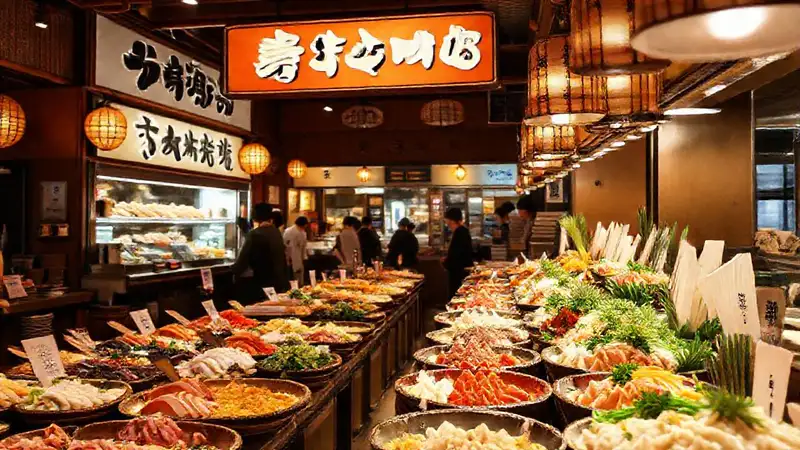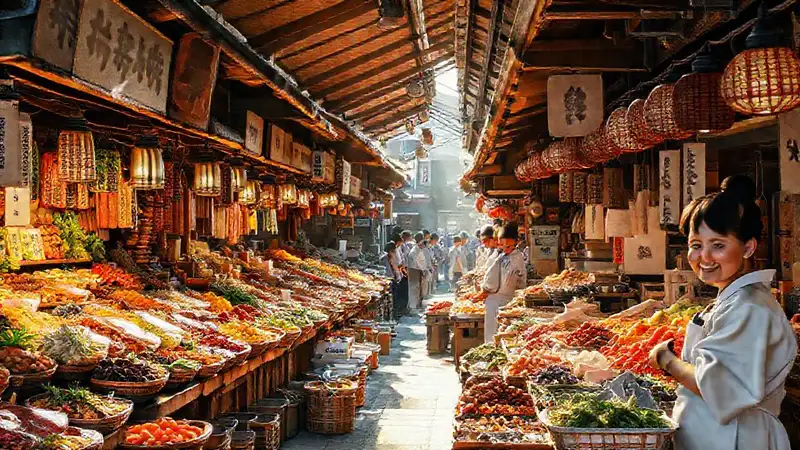Sushi, a dish deeply rooted in Japanese cuisine, has evolved dramatically over centuries, developing distinct regional variations reflecting local ingredients and culinary traditions. Each area boasts its own unique approach to rice preparation, fish selection, and presentation. While Tokyo sushi is globally recognized, a fascinating tapestry of regional sushi styles exists across Japan, offering a far richer and more nuanced experience. This article will delve into three prominent regional sushi styles: Hokkaido, Kansai, and Tokyo, exploring how their geographical landscapes profoundly influence their seafood focus.
The unique conditions of each region – from the extreme cold of Hokkaido to the warmer climates of Kansai – directly impact the types of fish available and the methods used to prepare them. Understanding these nuances is crucial to appreciating the true breadth and artistry of Japanese sushi. Furthermore, these differing environments have fostered separate, highly specialized sushi techniques, each contributing to the complex and rewarding world of Japanese culinary heritage – a true testament to regional diversity.
Hokkaido Sushi: The Land of Abundance
The Arctic Influence
Hokkaido's vast, mountainous terrain and proximity to the Sea of Okhotsk result in a seafood supply unlike anywhere else in Japan. The icy waters host incredibly rich populations of crabs, uni (sea urchin), salmon, and various types of shellfish. These raw materials define Hokkaido sushi, prioritizing freshness and utilizing ingredients that simply aren't as readily available elsewhere. The extremely low temperatures also contribute to the exceptional preservation of these delicate seafood items.
The intensive fishing practices in Hokkaido necessitate careful handling of the catch, leading to a higher degree of skill among sushi chefs. They've developed techniques specifically geared toward maximizing the flavor and texture of these seasonal delicacies. The preservation methods, heavily reliant on freezing and chilling, are integrated into the entire sushi-making process – almost a complete reliance on the environment.
Hokkaido sushi frequently showcases larger portions of seafood, reflecting the abundant catches. Dishes like kakiage sushi (crab and vegetable tempura rice rolls) and uni don (sea urchin bowl) are particularly popular, demonstrating the region's commitment to showcasing its premium ingredients. It’s a celebration of the region's bounty – pure and unadulterated seafood.
Kansai Sushi: The Refined Techniques
Kyoto’s Legacy
Kansai, encompassing the area around Osaka and Kyoto, has a long and storied history of culinary excellence, heavily influenced by Buddhist traditions emphasizing simplicity and purity. This legacy is reflected in Kansai sushi, which tends to be more focused on presentation and refined techniques compared to some other styles. It’s characterized by precise knife work and a delicate balance of flavors.
Kansai sushi is known for its otozushi, a style where the rice is gently pressed against the fish, allowing the flavors to meld together more seamlessly. This method, considered more subtle than the Tokyo style, highlights the natural flavors of the seafood. The chefs in this region often emphasize meticulous attention to detail, cultivating a sophisticated understanding of flavor profiles.
Kansai’s influence extends beyond just sushi; it’s also known for its beautiful and artful presentation, a direct link to the aesthetic principles of Kyoto’s gardens and tea ceremonies. The focus is less on massive portions and more on the overall experience – a balanced harmony of taste, texture, and visual appeal, creating a genuinely refined experience.
Tokyo Sushi: The Precision Standard

The Edo Tradition
Tokyo sushi, often associated with Edomae sushi (sushi originating from Edo, now Tokyo), has become synonymous with the art of sushi globally. This style emphasizes the skillful preparation of nigiri – small, oblong mounds of vinegared rice topped with a slice of fish – focusing on an incredibly pure and delicate flavor. The style is intensely influenced by the trading port history of the city.
Tokyo sushi chefs are renowned for their expertise in selecting the freshest fish and preparing it with an almost surgical precision. They develop an acute sense for subtle differences in texture and aroma, enabling them to match each piece of fish perfectly with the rice. This dedication to quality and technique is considered the gold standard in the world of sushi – a demanding, yet rewarding standard.
The Edomae style also incorporates the use of shari, a specific type of vinegared rice that is seasoned with kombu (kelp) and rice vinegar. This specific preparation is integral to the unique taste and texture of Tokyo sushi. The iconic sakuramochi (cherry blossom mochi wrapped around sweet bean paste) is also a strongly rooted part of the Tokyo sushi tradition.
Regional Specialities and Modern Innovations
Beyond the Basics
While these are general outlines, it's important to note that regional sushi styles aren't entirely fixed. Modern chefs are constantly experimenting with ingredients and techniques, drawing inspiration from all three regions. You'll find Hokkaido-inspired elements in Tokyo restaurants, and Kansai influences in Hokkaido preparations. This constant interplay and evolution creates a vibrant and dynamic sushi scene.
Each region retains its particular strengths and specialties – Hokkaido's abundance, Kansai’s refinement, and Tokyo’s precision – all contributing to the overall richness and diversity of Japanese sushi. It’s this ongoing interplay of tradition and innovation that keeps the art of sushi exciting and relevant across generations – a truly living legacy.
Conclusion
Exploring the regional differences in Japanese sushi reveals a fascinating connection between geography, culture, and culinary art. The unique environmental factors, from Hokkaido’s frozen tundra to Kansai’s warmer climates, have shaped the seafood available and the techniques employed by sushi chefs. Understanding these influences provides a deeper appreciation for the nuances of each style, transforming a simple dish into a complex and rewarding gastronomic journey.
Ultimately, the beauty of Japanese sushi lies in its regional variations. Each style offers a distinct experience, showcasing the diverse resources and traditions of the country. It’s a testament to the Japanese spirit of adaptation and innovation, constantly refining and elevating a culinary art form – a lasting and beautiful expression.
 What makes Tokyo’s sushi a celebrated art form
What makes Tokyo’s sushi a celebrated art form How does Tokyo’s innovation affect sushi’s evolution
How does Tokyo’s innovation affect sushi’s evolution How does Hokkaido's promotion influence tourism
How does Hokkaido's promotion influence tourism How does Tokyo’s tradition ensure high standards
How does Tokyo’s tradition ensure high standards How does the seasonality affect Kansai sushi
How does the seasonality affect Kansai sushi What are the traditional seasonings in Kansai sushi
What are the traditional seasonings in Kansai sushi How does Kansai’s culinary heritage shine through
How does Kansai’s culinary heritage shine through How does Kansai sushi relate to local markets
How does Kansai sushi relate to local markets
Deja una respuesta